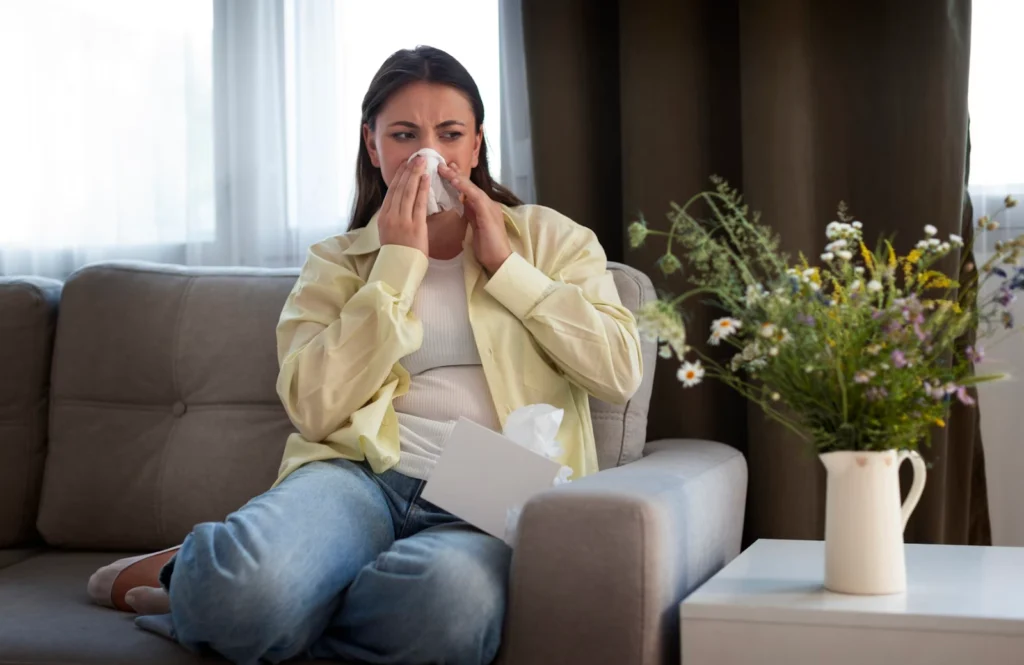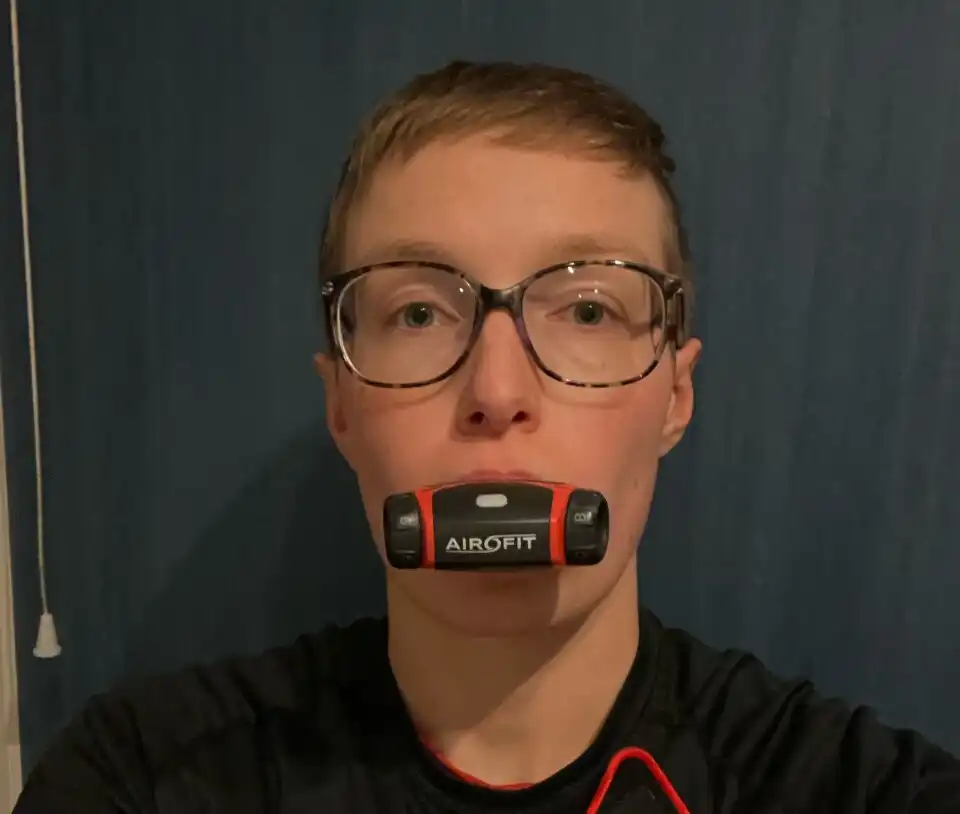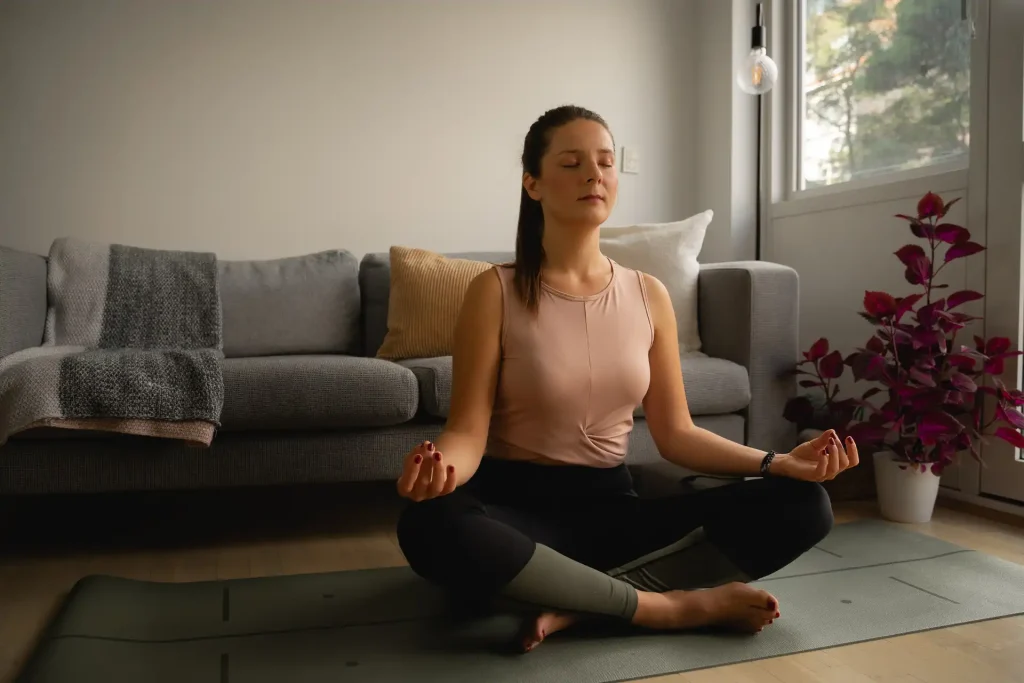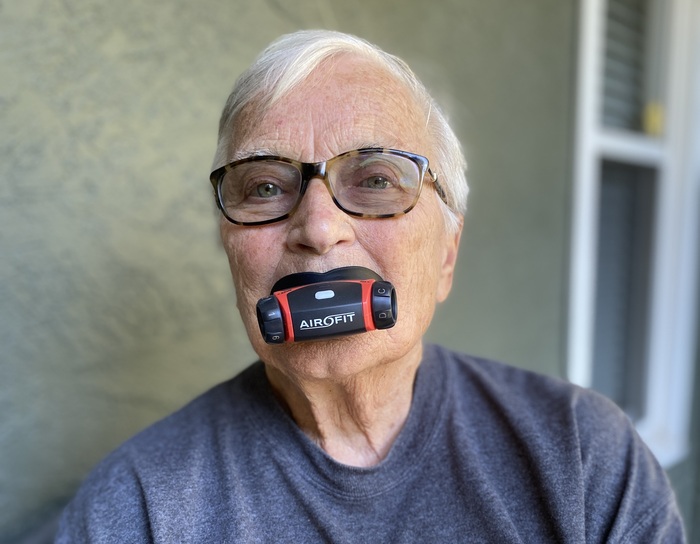Training with Airofit can improve your breathing and contribute to Covid recovery
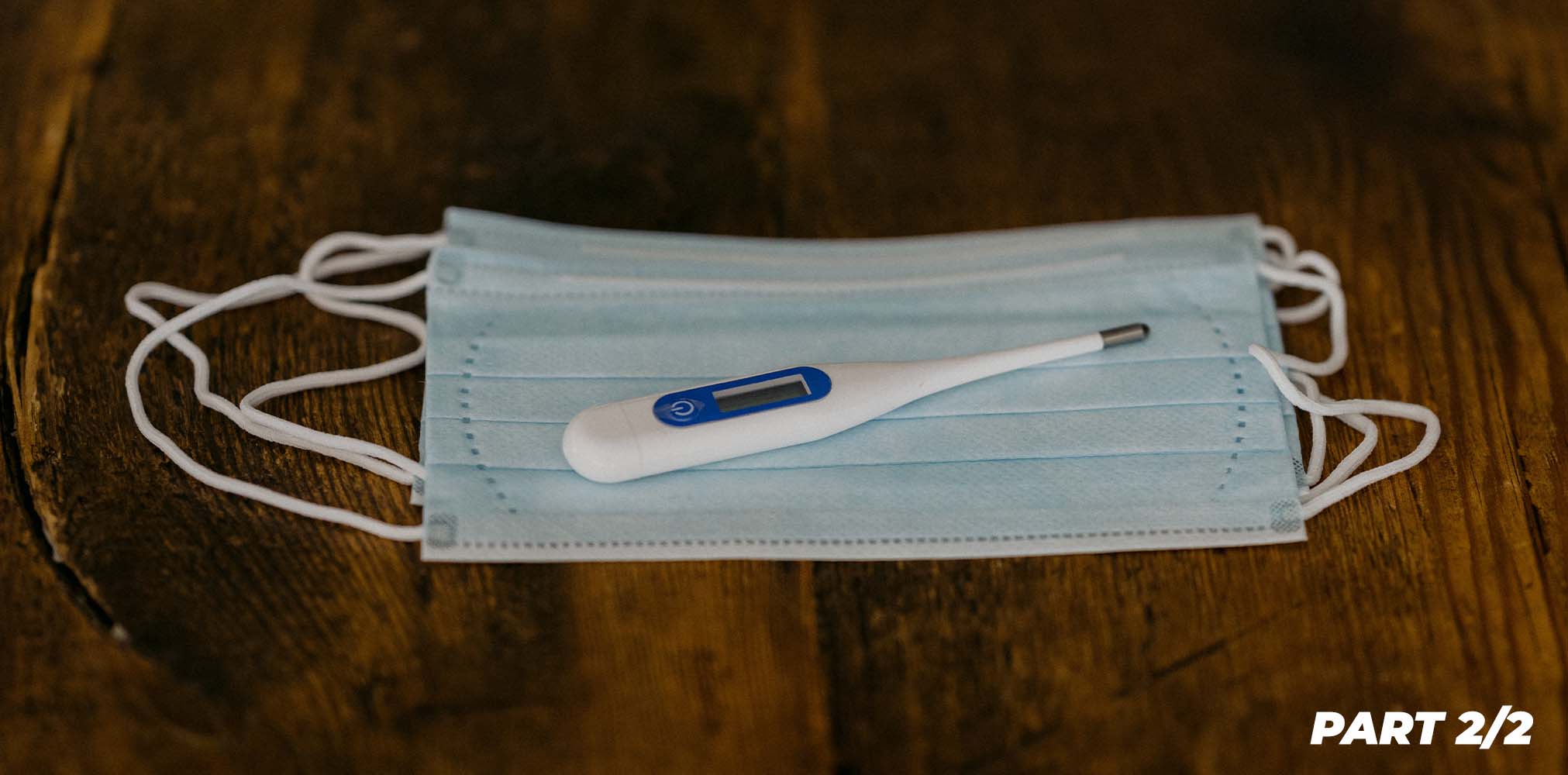
Part 2/2 – Read Part 1 here
Breathless, winded, can hardly catch my breath… There are many ways we express that feeling of not having enough air. While athletes and fitness enthusiasts might be used to doing ‘cardio’ and building up their heart and lung strength, most people only really pay attention to their breathing when some moderate exertion leaves them struggling for breath.
Louisa, an active 30-year-old, caught Covid in January 2021
“I was hospitalized twice… was confused and frustrated, wondered if I would ever get better… I had no energy, couldn’t even have a conversation. I was recommended to try Airofit by a therapist at the hospital. After just 5 days of training for 5 minutes a day, I experienced that my breathing was better. For me it has made a big difference.”
The total amount of air we can inhale is defined as VLC (Vital Lung Capacity). And the science suggests that we cannot increase VLC. As we age, (regardless of gender) our Vital Lung Capacity decreases, as this graph shows.
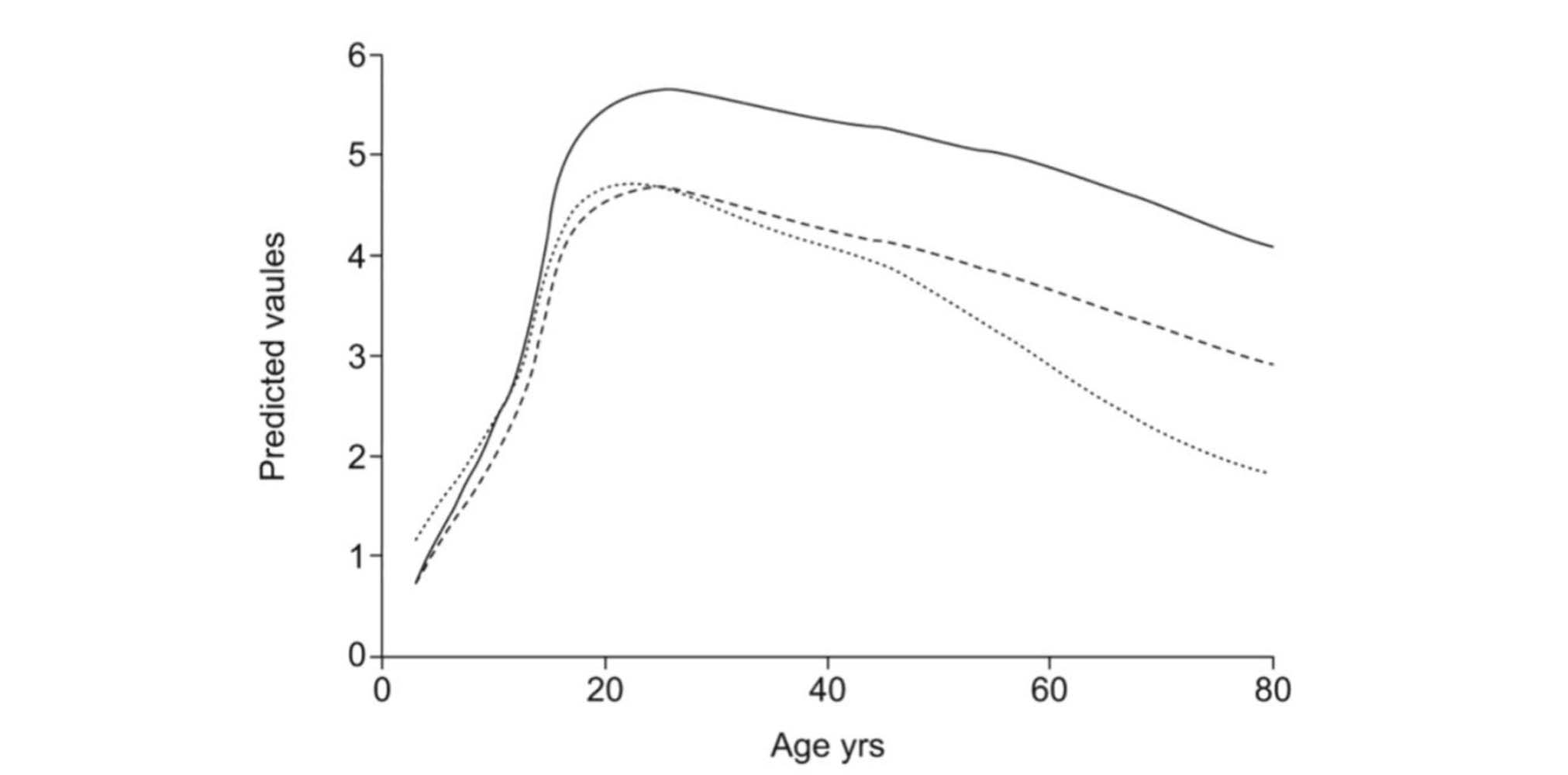
Predicted median for forced expiratory volume in 1s in L (- – – – -), forced vital capacity (FVC) in L (––––) and forced expiratory flow at 25–75% of FVC in L·s−1 (·········).
Source: Reference values for lung function: past, present and future | European Respiratory Society
So, what is the effect of Airofit training for general users?
The results speak for themselves: a minimum of 30% increase after just four weeks of regular training with Airofit!
The graph below shows the change our users have achieved taking the Airofit lung test with resistance after week 1 and again after week 4 for different age groups. Airofit does NOT measure VLC, it measures the amount of air registered in the App by blowing with resistance through the device, which we have termed ‘Accessible Lung Capacity’. Looking at the stats from our users, we could see the peak in the app’s measurement of accessible lung capacity, at around age 25 and the gradual decline over time, just like in the graph above.
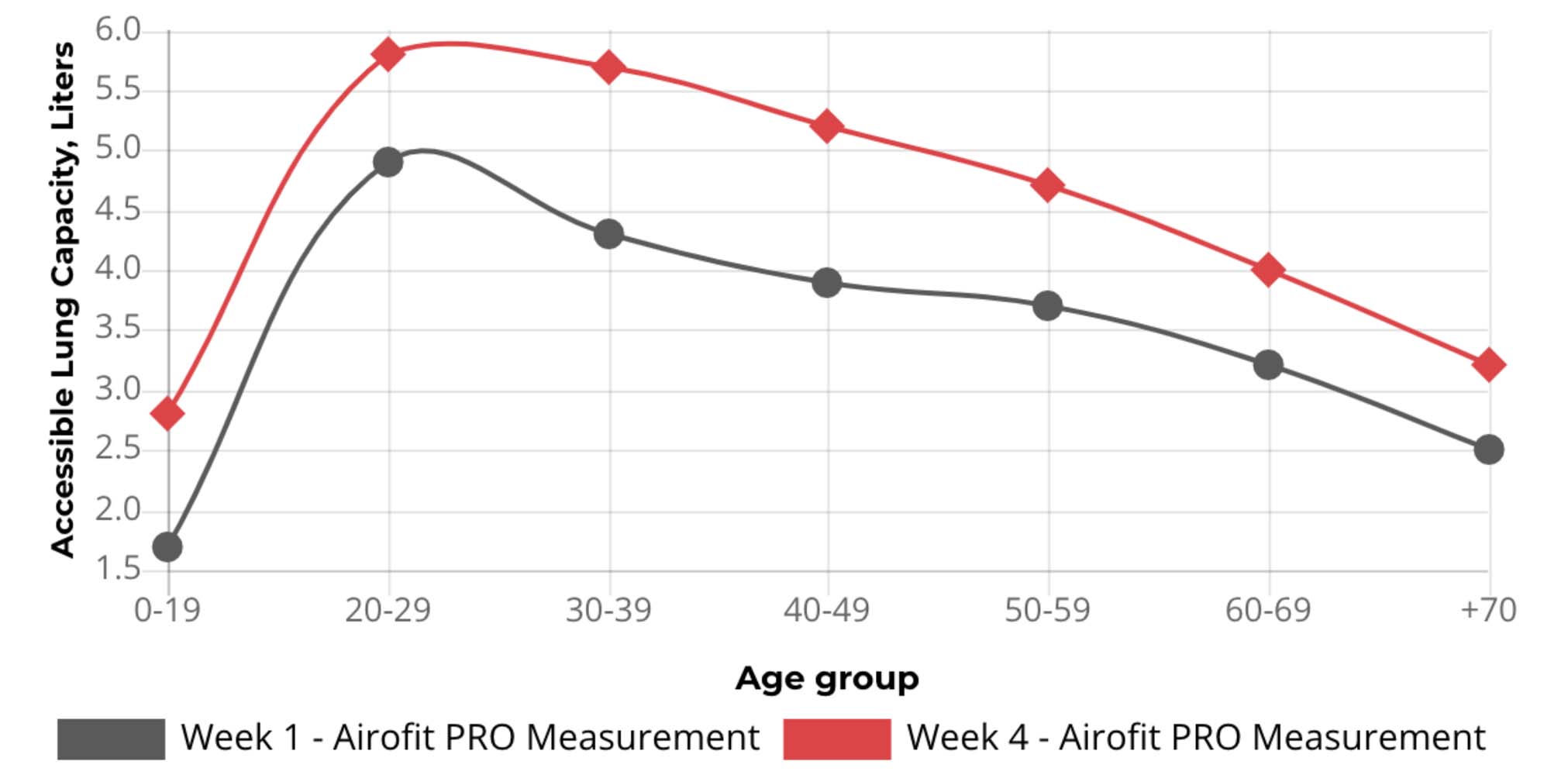
*The graph is not subject to statistical testing. The dataset potentially suffers from measurement error.
We have removed the first 3 data points in the first week to account for familiarization with the use of Airofit. Outliers with values above 12 liters and below 0.5L are removed. Likewise, datasets of individuals that did not train consistently throughout the period are also re-moved. The remaining data consists of 1,837 individuals with 85% registered as male and the remaining 15% registered as female. The graph indicates an improvement in test results of Airofit lung function across all ages. The graph shows that after 4 weeks of training a minimum of 200 min with an Airofit, our data showed a significant improvement in the app’s accessible lung capacity test.
Covid 19 and Respiratory Muscle Training
Studies have shown that respiratory muscle training is a most relevant method, to resist the severe consequences of a COVID 19 infection, and that the training is relevant both before, during, and after an infection.
A recent randomized controlled trial by Liu et al. from April 2020, performed on elderly covid-19 patients in the rehabilitation phase has shown that both inspiratory and expiratory muscle training as part of a Covid19 rehabilitation, provided significant improvements in respiratory function, quality of life, and reduced anxiety. This suggests that by training both inspiratory and expiratory muscle strength, you can effectively improve your rehabilitation.
Conclusions
Our data clearly shows the increase in Accessible Lung Capacity, measured by the amount of air users can blow through the device over the course of training. There could be other explanations for these increases, and we are basing this solely on our own data points and on self-reported age registered by the users. However, this significant increase in the volume of air through the Airofit device supports the feedback from our users, and the existing studies on respiratory muscle training. Respiratory muscle training works, meaning that people do regain some of their lost lung capacity. As part of post-Covid rehabilitation, Respiratory (in-spiratory muscle training) can play a valuable role, improving breathing and helping patients regain their former quality of life.
*Statements regarding breathing trainer have not been evaluated by the FDA and are not intended to diagnose, treat, cure, or prevent any disease or health condition.
